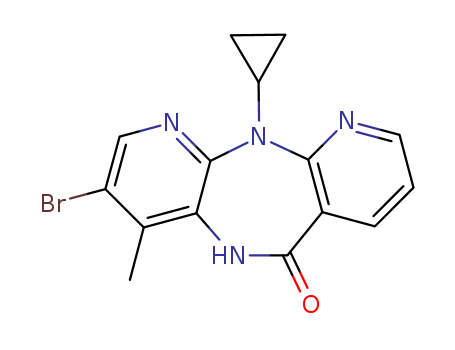- Chemical Name:3-Bromo Nevirapine
- CAS No.:284686-21-1
- Molecular Formula:C15H13BrN4O
- Molecular Weight:345.198
- Hs Code.:
- DSSTox Substance ID:DTXSID80443572
- Wikidata:Q82261460
- Mol file:284686-21-1.mol
Synonyms:3-Bromo Nevirapine;284686-21-1;6-bromo-2-cyclopropyl-7-methyl-2,4,9,15-tetrazatricyclo[9.4.0.03,8]pentadeca-1(11),3,5,7,12,14-hexaen-10-one;DTXSID80443572;CS-T-49833;3-Bromo-11-cyclopropyl-5,11-dihydro-4-methyl-6H-dipyrido[3,2-b:2',3'-e][1,4]diazepin-6-one;FT-0663809;J-017103




